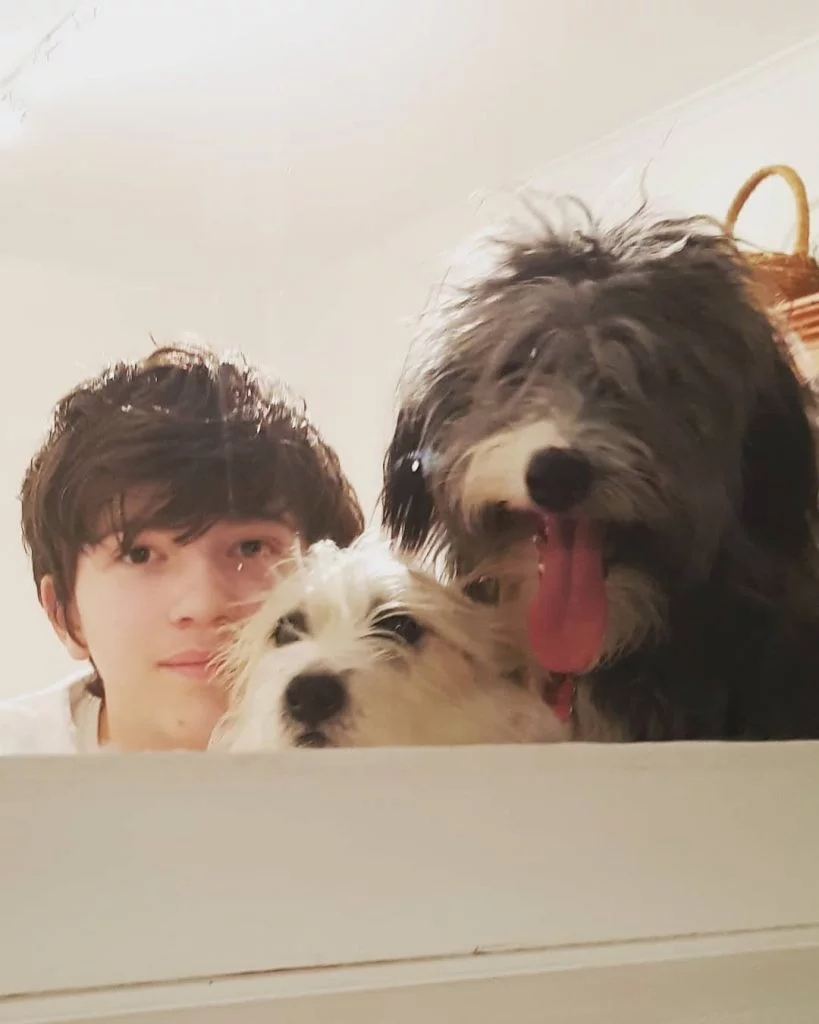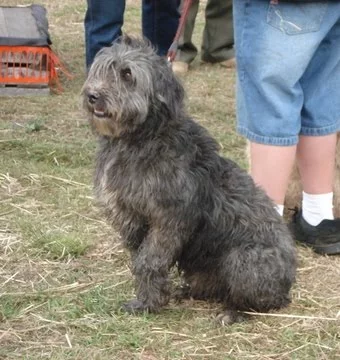Smithfields were bred originally as herding dog breeds during colonial time. The dog’s sturdy appearance is just as robust as that of a Collie. Smithfield was named for the Smithfield Market where London farmers used to sell their cattle.
Smithfield is medium-sized dog with shaggy, rough or floppy hair. It has a tip on the tail. They are also highly athletic and intelligent.
Origin and History
Smithfield’s history is somewhat hazy. It is well known, however, that the Smithfield breed originated in England. Collies are not to be mistaken with the breeds of today.
Smithfields are working dogs, and appearance is not a major concern. The breed was also exported to Australia to go with their cattle when they first colonized the country.

Smithfields did not seem to be able to survive in this harsh climate. They were unable to gather the stamina necessary to return the animals to Sydney’s market.
Ranchers began breeding Smithfields, Dingos, and other European breeds to create a more efficient working dog. This is how they came across breeds like the Australian Cattle Dog or Stumpy Tail Cattle Dog. It is for this reason that the Smithfields have almost been extinct.
Today, there aren’t many Smithfields. Smithfields are only found today on farms that have just enough breeders.
Is it Easy to Train Smithfields?
Smithfields, also known as herding dogs, are athletic by nature. It is known as a polite, friendly dog. You will find that your Smithfields become happier the more you work with them.
Smithfields can be moody, just like any breed. Smithfields can be moody at times, but there is no need to panic. The fact that they make great pets makes it easy for them to be trained. Smithfields can be described as highly intelligent and they also love to “work”. It doesn’t matter if they are gathering sheep for their owner or retrieving balls.
Is Smithfields good for children?
This is a fact that you can’t doubt. Smithfields can be wonderful family companions. Enjoy running, fetching and your child’s presence.

The breed, as mentioned above, has very calm and friendly character. The breed is also loyal to its master. Smithfields can be found running alongside your children, protecting them as they play.
Smithfields is afflicted with what health issues?
The breed is near-extinct, and only found in isolated farmlands. Therefore, it’s impossible to get accurate information on the health problems of the breed. All dogs are susceptible to the diseases listed below at some point in their lifetime.
- Hip Dysplasia
- The Eyes:
- Elbow Dysplasia
Smithfields, on the other hand are healthy dogs because they get enough exercise. Smithfield’s health issues are directly linked to their owner.
Is Smithfields on the verge of extinction?
The Smithfields dog breed is almost extinct. Only a few dedicated breeders from rural areas are left who want to revive the Smithfields breed. However, it is not known how many ‘Pure’ dogs remain.

Until now, the breed has been successful enough for it to be acknowledged by various associations. Smithfields have been recognized by Tasmanian Working Sheep Dog AssociationCDL, RSPCA, Municipal Councils, Midlands Agriculture Society and Central Animal Records.
Smithfields – Colors and Patterns
- Black
- Grey
- Black with white collar
- White
Smithfields Facts
- Smithfields cannot be considered a real breed because the dogs are usually bred in farms or on homesteads.
The Dog Breeds They Are Similar To
- Asutralian Cattle Dog
- Australian Stumpy-Tailed Cattle Dog
Smithfields Dogs Puppies Price
Price of Smithfields dogs’ puppies not available.
Smithfields: Behavior traits
Smithfields can be excellent friends. These dogs are very loyal, and they love being at home. They are polite, gentle and loving.
Smithfields is the ideal choice if you are looking for an animal that will be a great companion and also a good worker. Smithfields are not just happy in the field, but they also thrive inside. You must still exercise them as these are working dogs.

It is important to make sure that you give your house dog enough outside exercise. As long as they are tired, you can get them to sleep by having them chase balls, catch Frisbees or learn new tricks.